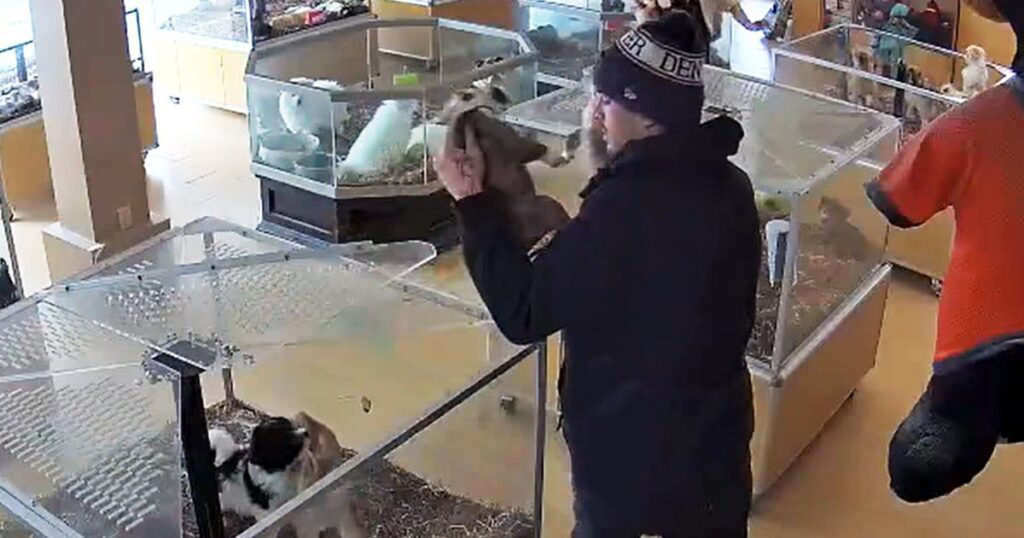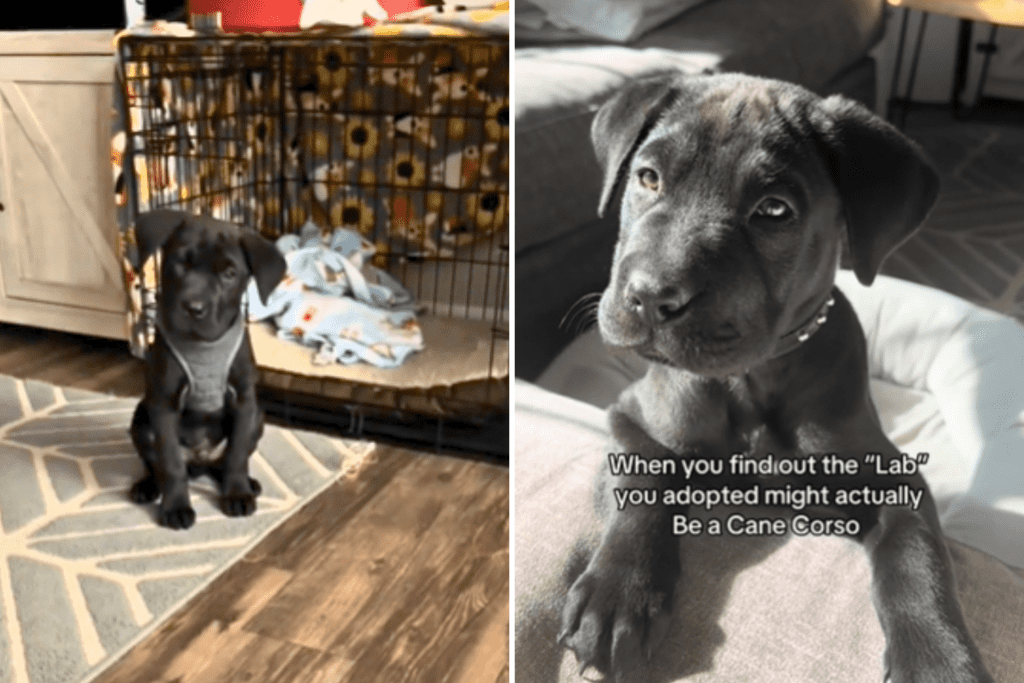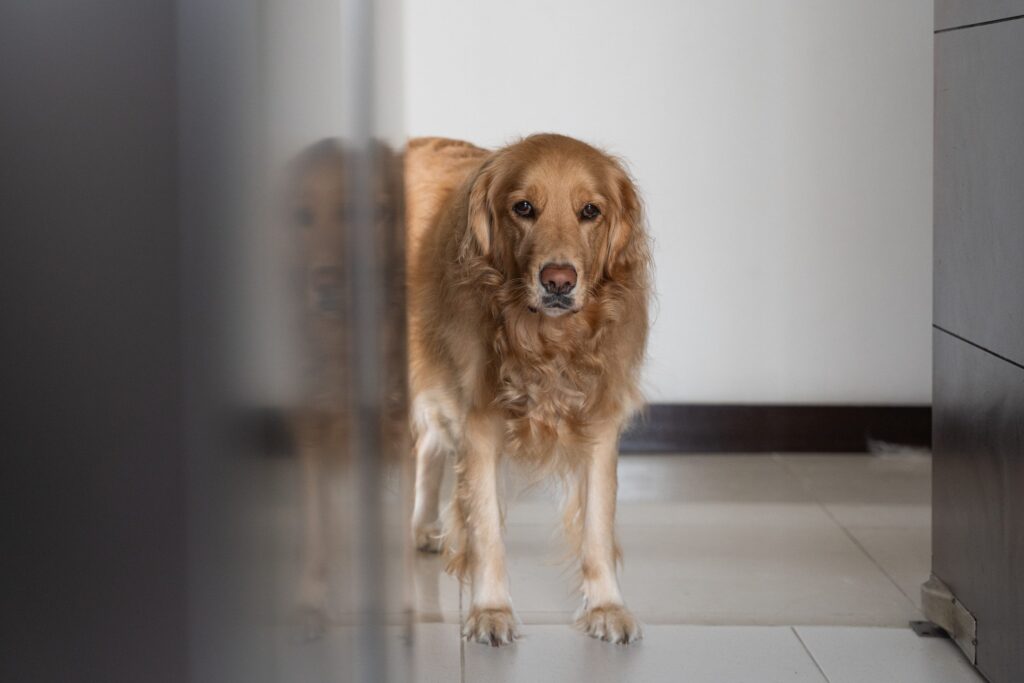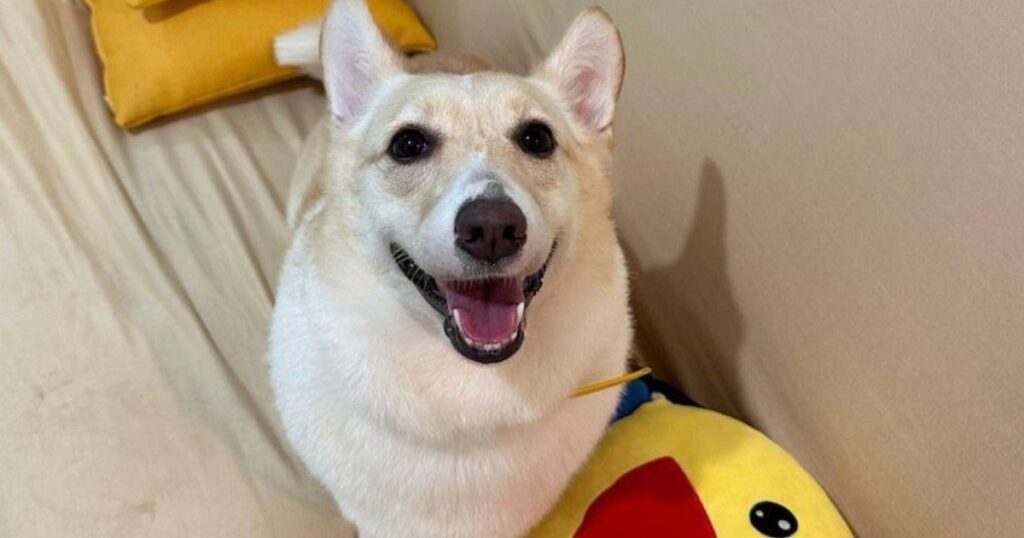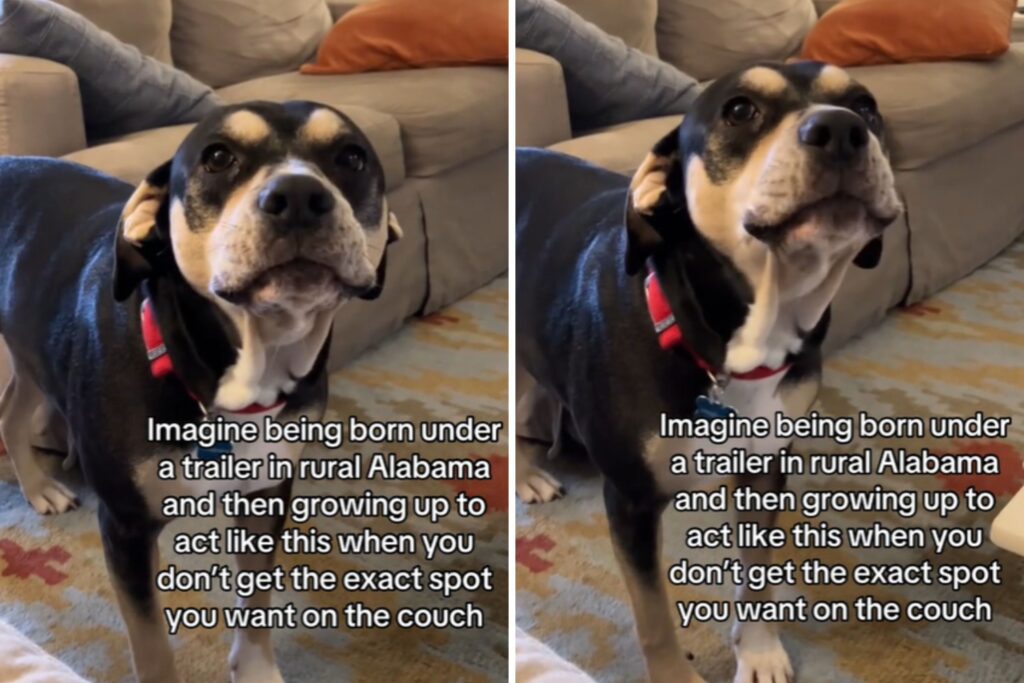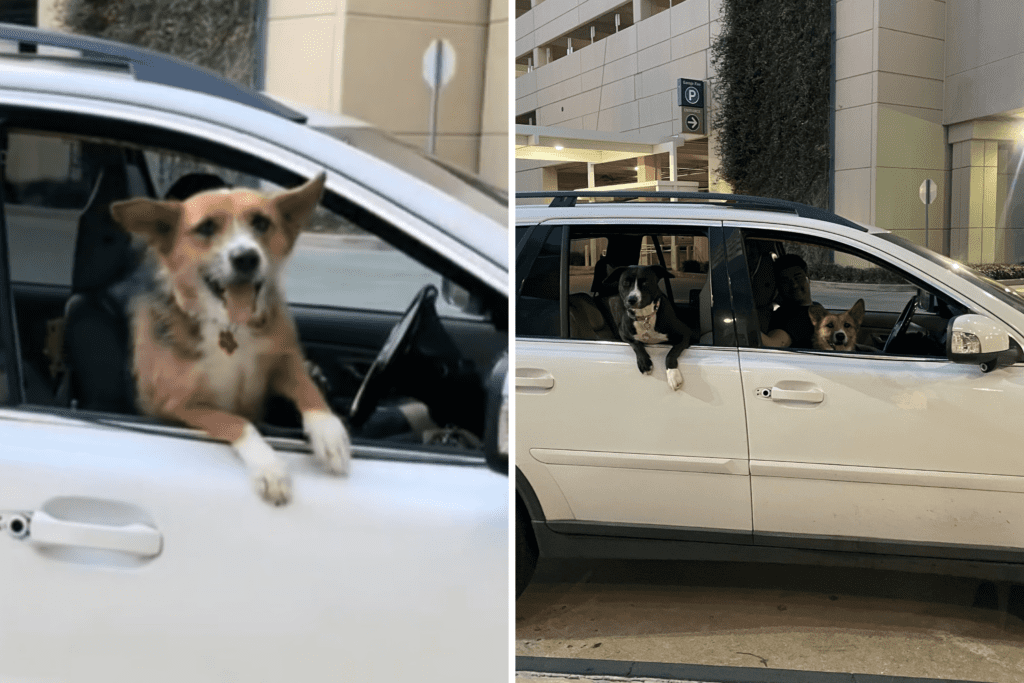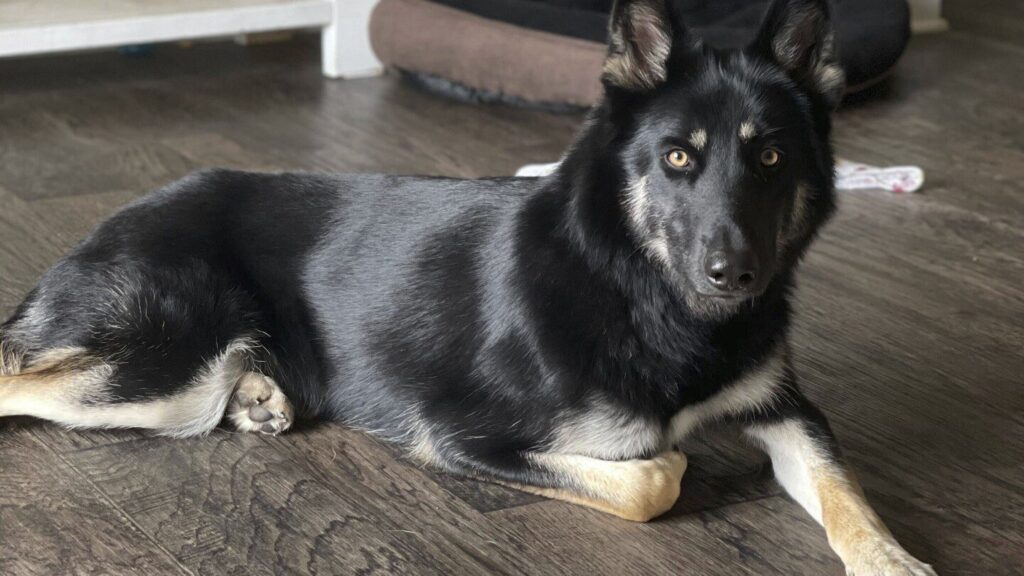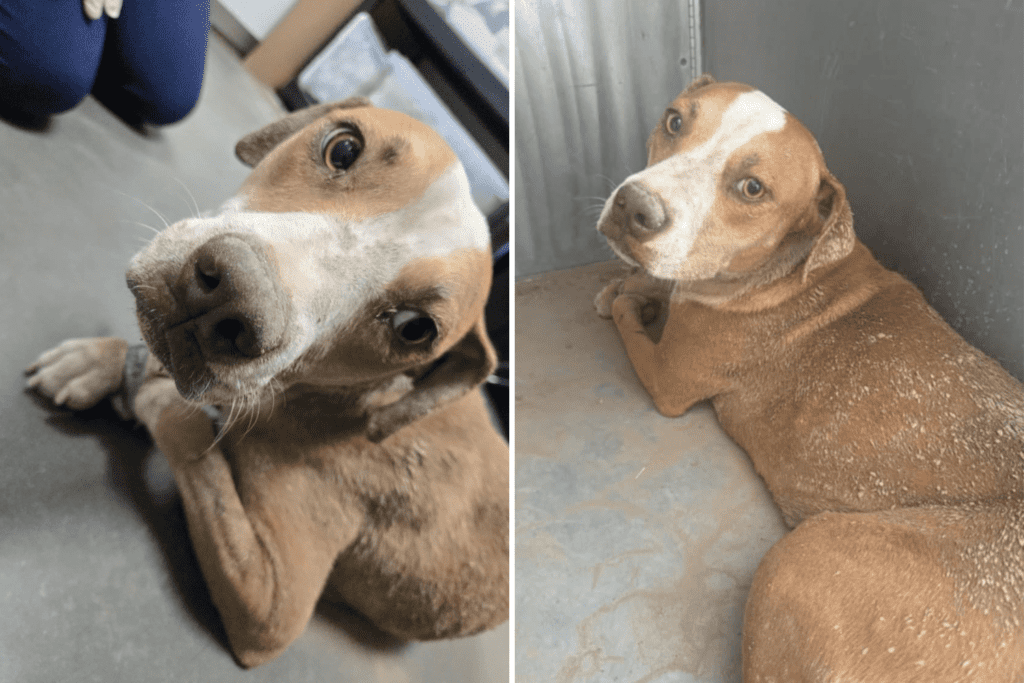Thieves fake seizure, steal bulldog puppies worth over $8,000 in videotaped pet store heist
A trio of thieves staged a seizure to divert attention as a pair of valuable bulldog puppies was snatched from a Denver-area pet store over the weekend, authorities said. On Monday, the Arapahoe County Sheriff’s Office said the puppies remain missing and that three suspects in the Friday afternoon heist were at large. It asked for the public’s help tracking down the pets and the suspects. The alleged heist after 1:30 p.m. Friday was captured on the store’s security video system, said manager Bianca Rose, whose family owns Perfect Pets in Centennial, Colorado, a city about 14 miles south of downtown Denver. After the dust settled, a man who had fallen to the ground to fake a seizure — allegedly to divert attention from the theft of the two dogs — stayed down and was taken into custody by arriving law enforcement officers, Rose said. A man steals two bulldog puppies from Perfect Pets in Centennial, Colo., on Friday.Courtesy Perfect Pets As the man was being detained, a pipe fell from his clothing, Rose said. The two other suspects, both men, got away, and the 11-month-old male puppies, each worth $4,300, remained missing, Rose said. “We do not have either dog back,” she said. The Arapahoe County Sheriff’s Office identified the man taken into custody as Timothy Davis, 37. He was booked on suspicion of conspiracy to commit a felony, theft, and drug possession, the sheriff’s office said in a statement Monday. Jail records show Davis was behind bars based on $2,500 bond, with an initial court date scheduled for Thursday. The man “faked the seizure,” the Arapahoe County Sheriff’s Office said in its statement. It’s not clear if Davis has been formally charged or if he has retained an attorney for the case. The area district attorney’s office and public defender’s office did not immediately respond to requests for information Monday night. The sheriff’s office said a fourth suspect was behind the wheel of a getaway vehicle, described as a gold Cadillac Escalade with chrome wheels, and it distributed a photo of the vehicle, a 2006 through 2013 short-wheelbase Escalade non-ESV that the sheriff’s office said had tinted windows and no license plates. According to Rose, the trio entered the store and immediately looked around at all the different dogs. That’s unusual, because patrons usually focus on one pen and pet the puppies, she said. One of the men flopped to the ground, faking a seizure to distract the employees, while another went to the bulldogs’ pen, pulled the top off and grabbed the only two English bulldog puppies in the store, Rose said. When an employee tried to tackle the alleged thief, he fell and fumbled the dogs, the sheriff’s office said in its statement. The employee, Rose said, was kicked in the face in the scuffle. The suspect got up, grabbed the the puppies and dashed outside with the other suspect, the sheriff’s office said. They hopped in the Cadillac and took off, the sheriff’s office said. “Deputies are still searching for the other three suspects,” the sheriff’s office said. Rose said another theft of high-value dogs, including a shih tzu valued at more than $2,000, took place at the store Feb. 12, when a woman with a stroller and another woman carrying a baby used a story of purchasing hamsters for a niece and nephew as a diversion. Her father was working at the time and was busy in the back of the store, boxing up free food for the hamsters — one of which he planned to hand to the women free of charge — when they snatched the dogs, Rose said. Dennis Romero Dennis Romero is a breaking news reporter for NBC News Digital. Colin Sheeley contributed . Read More

